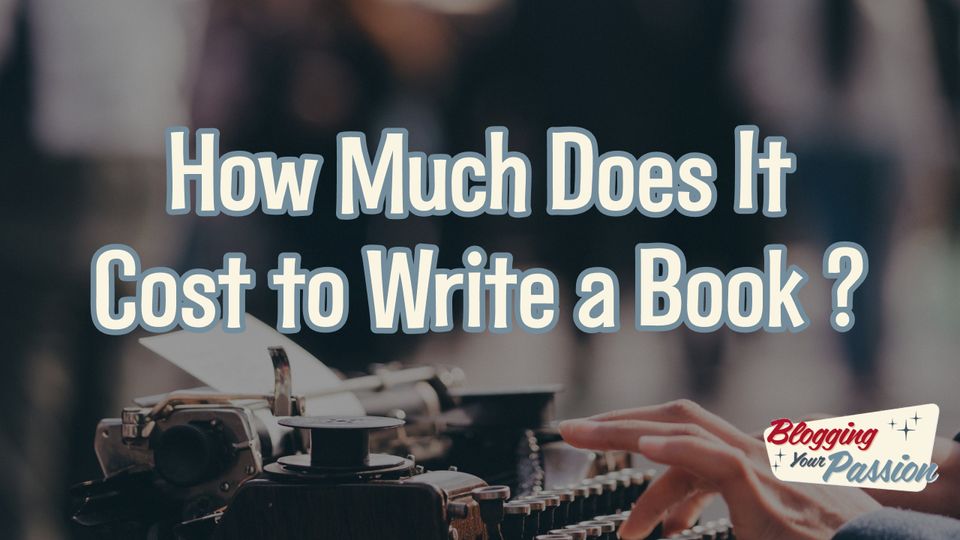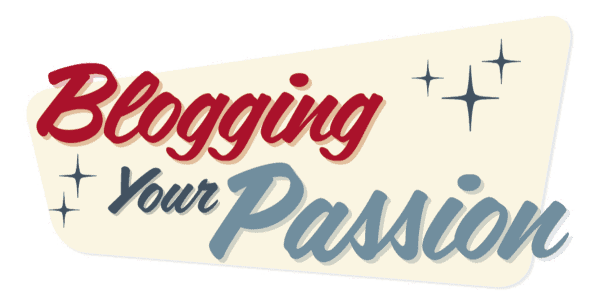How Much Does It Cost to Write a Book in 2024?

Are you dreaming of writing a book but worried about the cost? Look no further!
In this article, we'll break down the expenses of self-publishing, helping you estimate your budget and control costs.
Discover top tips to save money while turning your dream into a reality. Don't let financial worries hold you back from belonging to the world of authors.
Let's find out how much it really costs to write a book!
Table of Contents (click to expand)
Key Takeaways
- Hiring a professional editor, cover designer, and formatter is essential for a polished and error-free final product.
- The cost of editing, cover design, and formatting can range from $200 to $1000 for self-published authors.
- eBook conversion and printing are necessary investments to reach a wider audience and maximize book sales.
- Researching and comparing different distribution options, as well as budgeting for marketing, are crucial for successful self-publishing.
The Costs of Self-Publishing Broken Down

When it comes to self-publishing, there are several key costs that you need to consider. These include:
- Editing: Editing plays a crucial role in the overall quality of your book. Hiring a professional editor can help improve the clarity, structure, and coherence of your writing. It's important to budget for editing services to ensure that your book is polished and error-free.
- Cover design: The cover of your book is the first thing that potential readers see, so it's essential to invest in a well-designed and eye-catching cover. Hiring a professional cover designer can help create a visually appealing cover that accurately represents your book's content and attracts readers.
- Interior formatting and layout: Proper formatting and layout are important for creating a professional-looking book. This includes elements such as font selection, chapter headings, page numbers, and margins. Investing in interior formatting and layout services can ensure that your book looks polished and is easy to read.
- eBook conversion: If you plan to publish your book as an eBook, you'll need to convert it into the appropriate digital format. This ensures that your book can be read on various e-readers and devices. Hiring a professional eBook conversion service can help ensure that your eBook is properly formatted and compatible with different platforms.
- Printing: If you plan to have physical copies of your book, you'll need to consider the cost of printing. This includes factors such as the type of paper, binding, and the number of copies you want to print. It's important to budget for printing costs to ensure that you have enough copies of your book for distribution and sales.
Each of these aspects plays a crucial role in the overall quality and professionalism of your book. It's important to budget accordingly and ensure that you invest in each area to create a polished final product.
Editing
To ensure a polished and professional final product, you should regularly hire an editor throughout the self-publishing process. A professional editor can provide valuable feedback and guidance to improve your manuscript.
When considering editing costs, it's important to understand the different types of editing available. One crucial stage is developmental editing, where the editor focuses on the overall structure and content of your book.
They'll help you refine your ideas, strengthen your argument, and ensure consistency throughout.
Another aspect of editing is the structural edit, which examines the flow and organization of your book. A professional editor will also pay attention to sentence structure and grammar, ensuring your writing is clear and coherent.
Investing in a professional editor is essential for a successful self-published book.
Cover design
Hiring a professional designer for your book cover is a crucial step in the self-publishing process, as it sets the stage for attracting readers and creating a visually appealing product.
As a self-published author, you want to ensure that your book stands out in the crowded market. A skilled book cover designer understands the self-publishing industry and knows how to create a cover that captures the essence of your story and appeals to your target audience.
The cost of hiring a book cover designer can vary depending on factors such as their experience, expertise, and the complexity of the design. On average, self-published authors can expect to spend anywhere from $200 to $1000 for a professional book cover design.
Interior formatting and layout
Investing in professional interior formatting and layout is essential for creating a polished and professional-looking book. When it comes to self-publishing, the interior design of your book plays a crucial role in attracting readers and making a lasting impression.
A well-designed interior layout ensures that your book is visually appealing, easy to read, and enhances the overall reading experience.
Professional editing is also a vital component of interior formatting, ensuring that your book is free from errors and inconsistencies. While the costs of professional interior formatting and layout can vary depending on the complexity of your book, it's worth the investment to ensure a high-quality end product.
It's important to consider printing costs when budgeting for your self-published book, as these expenses can significantly impact your overall production costs.
eBook conversion
After investing in professional interior formatting and layout, the next step in self-publishing is eBook conversion. This is a crucial aspect of the overall costs involved in bringing your book to market.
eBook conversion is the process of converting your manuscript into a digital format that can be read on e-readers, tablets, and smartphones. In today's digital age, eBooks have gained tremendous popularity, offering convenience and accessibility to readers worldwide.
Whether you choose to self-publish or go the traditional publishing route, having an eBook version of your book is essential for maximizing book sales. The cost of eBook conversion varies depending on the complexity of your book's layout and design.
However, it's important to consider this expense as an investment in reaching a wider audience and increasing your book's potential for success.
Printing
To print your self-published book, you'll need to consider the costs involved in this crucial step of the publishing process. The printing cost can vary depending on factors such as the size, format, and number of pages in your book.
For a print book, you have the option of choosing between hardcover and paperback. Paperback books are generally more cost-effective, with prices ranging from $2 to $5 per book. On the other hand, hardcover books tend to be more expensive, with prices ranging from $10 to $20 per book.
It's important to keep in mind that these price ranges are estimates and can vary depending on the printing company you choose. Take your time to research different printing options and compare prices to find the best fit for your budget and publishing goals.
Distribution and fulfillment
For successful distribution and fulfillment of your self-published book, you'll need to consider the costs involved in this crucial aspect of the publishing process.
Here's an overview of the average costs you may encounter:
Distribution:
- Online Retailers: To make your book available on popular platforms like Amazon, Barnes & Noble, or Apple Books, you may need to pay a distribution fee. This can range from $0 to $199, depending on the retailer.
- Retail Price: Keep in mind that online retailers typically take a percentage of each sale, usually around 30%. So, consider this when setting your retail price.
Fulfillment:
- Number of Copies: If you plan to sell physical copies of your book, you'll need to factor in the printing and shipping costs for each copy.
- Packaging and Shipping: You may need to invest in packaging materials and cover the shipping expenses to send books to readers.
Marketing and promotion
When planning the marketing and promotion of your self-published book, it's essential to consider the costs involved in reaching your target audience.
Book marketing is a crucial aspect of self-publishing, as it helps create awareness and generates sales.
The total cost of marketing your book will depend on various factors, such as the marketing strategies you choose and the price point of your book. Popular marketing methods include social media advertising, book signings, blog tours, and email campaigns.
These can range in cost, but it's important to invest in strategies that align with your target audience and budget.
Remember to factor in these expenses when calculating the total cost of self-publishing your book, as effective marketing can greatly impact its success.
ISBNs and barcodes
As you delve into the costs of self-publishing your book, it's important to consider the expenses associated with obtaining ISBNs and barcodes. These are crucial elements for self-published writers, as they help identify and track your book in the market.
Here are the real costs you should be aware of:
- ISBN numbers: An ISBN is an international standard book number that uniquely identifies your book. Each format of your book (eBook, paperback, hardcover) requires a separate ISBN.
- Barcodes: Barcodes are scannable codes that contain the ISBN and price of your book. Bookstores and retailers use barcodes to easily process sales and inventory.
While there are free or low-cost options available, it's important to note that these may limit your distribution options. Purchasing ISBNs and barcodes directly from the official agencies, such as Bowker, typically costs around $125-$300 depending on the package you choose.
Investing in these identifiers ensures professionalism and accessibility for your book in the competitive publishing world.
Any additional services (illustrations, photography, etc.)
Continuing with the topic of self-publishing costs, let's explore the expenses associated with any additional services, such as illustrations or photography, that you may require for your book.
Adding illustrations or photographs to your book can greatly enhance its visual appeal and overall quality. However, hiring professional designers or photographers to create these visuals can be quite costly.
The cost of illustrations or photography will depend on factors such as the complexity of the artwork, the number of illustrations needed, and the experience of the professional hired.
On average, you can expect to pay anywhere from a few hundred dollars to several thousand dollars for these additional services. It's important to budget for these expenses when considering the overall cost of self-publishing your book.
How to Estimate Your Self-Publishing Budget

To estimate your self-publishing budget, start by knowing your manuscript length and complexity. This will help you determine the amount of editing, formatting, and design work needed.
Set realistic timelines and expectations, taking into account the time it will take for each step of the publishing process.
Don't forget to get quotes from several providers for each service you'll need, and build in extra budget for unexpected expenses that may arise along the way.
Know your manuscript length and complexity
Estimating your self-publishing budget requires understanding the length and complexity of your manuscript. By considering the word count and number of pages, you can gauge the overall size of your book.
A longer manuscript may require more time and resources to edit and proofread, increasing the complexity and potential cost.
Additionally, the complexity of your content, such as technical jargon or intricate plotlines, can impact the time and effort needed for editing and formatting.
Understanding these factors will help you determine the level of editing and design services required for your manuscript.
Keep in mind that these estimates are based on the first draft and may change as you revise and refine your work.
Set realistic timelines and expectations
To set realistic timelines and expectations for estimating your self-publishing budget, you need to carefully consider the time and effort required to complete your book.
Writing a book is hard work that requires dedication and perseverance.
It's important to understand that self-publishing involves more than just writing the manuscript. You also need to factor in the time it takes to edit, design the cover, format the book, and market it. These tasks can add up and take much time to complete.
You must be aware of the costs of self-publishing, such as editing services, cover design, and marketing expenses. By setting realistic timelines and expectations, you can better plan your budget and ensure your book's success.
Get quotes from several providers for each service
When estimating your self-publishing budget, consider getting quotes from several providers for each service you need, such as editing, cover design, and marketing. This will help you make informed decisions and ensure that you're getting the best value for your money.
Here are some reasons why getting multiple quotes is important:
- Comparison: By obtaining quotes from different providers, you can compare their prices and services to find the most affordable and suitable options for your needs.
- Quality: Gathering quotes allows you to assess the expertise and qualifications of different service providers. You can choose a copy editor, for example, based on their experience and ability to deliver a high-quality book.
- Book Launch: A successful book launch is crucial for self-published authors. By obtaining quotes for marketing services, you can find providers who specialize in promoting books and have a track record of achieving results.
- Own ISBN: Some self-published authors prefer to have their own ISBN instead of using the ones provided by platforms. By getting quotes for obtaining an ISBN, you can explore options that align with your preferences.
Build in extra budget for unexpected expenses
To ensure that you're prepared for unexpected expenses, it's important to include additional funds in your self-publishing budget.
Especially if you're working on a tight budget or have little money to spare, building in an extra budget can save you from financial stress and setbacks in the long run.
When self-publishing a children's book, there are various unforeseen expenses that can arise, such as additional editing or design work, marketing and promotion costs, or even unexpected printing and shipping fees.
By setting aside some extra funds in your budget, you can be ready to tackle these unexpected expenses without derailing your publishing process.
Top Tips for Controlling Self-Publishing Costs

If you want to control your self-publishing costs, there are several tips you can follow.
First, do your own editing and proofreading to save on professional fees.
Next, design your own basic cover to avoid hiring a designer.
Llearn DIY interior formatting to avoid paying for formatting services.
Do your own editing and proofreading
Save money by taking on the task of editing and proofreading your own book. While it may seem daunting, there are different ways you can ensure your first book is well-edited and polished without breaking the bank. Here are some tips to help you get started:
- Create a checklist: Make a list of common errors and areas you need to focus on, such as grammar, punctuation, and consistency.
- Take a break: After finishing your draft, give yourself some time away from the manuscript. This will help you approach the editing process with fresh eyes.
- Read out loud: Reading your book aloud can help you catch errors and improve the flow of your writing.
- Utilize online resources: There are many free online tools available that can help you with grammar and spelling.
By taking on the task of editing and proofreading your own book, you can save money and ensure your first book is a professional and polished piece of work.
Design your own basic book cover
How can you create your own basic cover to control self-publishing costs?
Designing your own cover for your business book can be a cost-effective way to ensure high quality while saving money. With the right tools and techniques, you can create a professional-looking cover without breaking the bank.
Start by using a publishing program that offers templates and design tools specifically for book covers. These programs make it easy to customize your cover with images, fonts, and colors that reflect the content and style of your book.
Remember to choose a design that's visually appealing and captures the essence of your book. By taking the time to design your own basic cover, you can save money and still create a cover that attracts readers to your copy of the book.
Learn DIY interior formatting
Format the interior of your book yourself to save money and maintain control over self-publishing costs. Taking on the task of interior formatting may seem daunting, but with the right resources and guidance, you can achieve professional results.
Consider the following tips for successful DIY interior formatting:
- Utilize online courses: There are numerous online courses available that can teach you the ins and outs of interior formatting. These courses provide step-by-step instructions and valuable insights from experienced professionals.
- Learn from successful books: Take a look at books that have achieved success in your genre. Analyze their interior formatting and layout to understand what works best for readers and how to create a visually appealing design.
Print in small batches using POD
To control self-publishing costs, consider printing your book in small batches using print-on-demand (POD) services.
Print on demand allows you to only print the number of books you need, reducing the upfront cost of printing a large quantity. This is especially beneficial if you're unsure of the demand for your book or if you want to test the market before committing to a larger print run.
By printing in small batches, you can also make adjustments or corrections more easily without wasting a large number of books. Additionally, POD services often offer cost-effective options for printing, helping you save money on production expenses.
Start marketing early and focus on low-cost strategies
Start marketing your book early and focus on low-cost strategies to control self-publishing costs. As a self-published author, you have the power to market your book and reach your target audience without breaking the bank.
Here are some low-cost strategies to consider:
- Utilize the power of social media: Create engaging content on platforms like Facebook, Twitter, and Instagram to connect with your readers and build a community around your book.
- Build an email list: Offer a free chapter or exclusive content in exchange for email addresses. This allows you to directly reach out to your audience and promote your book.
- Explore affordable marketing strategies: Consider guest blogging, participating in online forums, or hosting virtual book events to generate buzz without spending a fortune.
- Go on a podcast guesting tour: Use a service like PodMatch to line up interviews for popular podcasts in your niche. Each interview can lead to more book sales for months to come.
How I Kept Book Publishing Costs Low for My Last Book
Now that you have a general overview of all the potential costs associated with publishing a book, let's look at a specific example.
My last book, Discover Your Message, was a self-published book. Since I teach clients how to write and publish books, I wanted to take on the challenge of trying to do the whole process myself.
So, here's a run down on my exact process that cost me almost nothing to publish a Kindle book, paperback book, hardcover, and audiobook.
- Write and Format Book: I used Atticus.io to write and format the book (one-time cost and you can do unlimited books).
- Edit the Book: I used the HemingwayApp (free version) to rewrite hard-to-read sentences. I also used Grammarly as the editor of the book.
- Book Covers: I used Canva to create the book cover design for the Kindle book, paperback, hardcover, and audiobook cover.
- Book Printing: I used Kindle Direct Publishing (KDP) as it is free to publish Kindle, print, and hardcover books.
- Audiobook Publishing: I used ACX and did the audiobook narration myself using Descript.com.
As you can see, you can DIY your way to publishing a book with very little cost.
FAQs about Self-Publishing Expenses
Are you wondering how much it will cost to self-publish your first book? Well, the average cost for a first-time self-published book can vary depending on factors such as editing, cover design, and formatting.
But don't worry, even if you're on a tight budget, there are ways to get quality services at affordable prices. Additionally, it's important to consider budgeting for marketing expenses to promote your book effectively.
And if you're looking for free self-publishing options, there are some available as well.
What is the average cost for a first-time self-published book
When self-publishing your first book, you may be wondering about the average cost involved in the process. Here is a breakdown of the average cost for a first-time self-published book:
Editing and Proofreading:
- Hiring a professional editor to review your manuscript for grammar, spelling, and content can range from $500 to $3,000, depending on the length of your book.
- Proofreading services, which focus on catching any remaining errors, typically cost around $200 to $1,000.
Cover Design and Formatting:
- A professionally designed book cover can cost between $200 and $1,500, depending on the complexity of the design.
- Formatting your book for print and ebook formats can range from $100 to $500, depending on the complexity of your book's layout.
How can I get quality services on a tight budget
If you're on a tight budget, you can still get quality services for self-publishing by carefully researching and comparing different service providers.
Look for providers that offer affordable hourly rates and flexible payment options.
It's important to remember that quality services don't always come with a high price tag.
When searching for a self-publishing service, consider the total price of their publishing program, which includes things like editing, cover design, and distribution.
Make sure to inquire about their experience and expertise in handling intellectual property rights.
Ask for references or read reviews from other authors who've used their services.
How much should I budget for marketing
To effectively market your self-published book, it's crucial to allocate a specific budget for promotional expenses. The good news is that marketing doesn't have to break the bank.
Here's how you can budget for marketing your book:
- Determine your marketing goals: Whether it's increasing book sales, building an author platform, or gaining exposure, knowing your goals will help you allocate your budget effectively.
- Research different types of marketing strategies: From social media advertising to book signings, there are various ways to promote your book. Research and choose the strategies that align with your target audience and goals.
Are there any free self-publishing options
If you're looking for affordable ways to self-publish your book, you may be wondering if there are any free options available. The bad news is that self-publishing often comes with costs. However, there are a few free self-publishing options that you can consider.
One popular choice is Amazon KDP (Kindle Direct Publishing), which allows you to publish your eBook for free on the Amazon platform. All you need is a well-formatted manuscript in Microsoft Word format.
Another option is to attend a free publishing workshop, where you can learn about the self-publishing process and get guidance on how to publish your book for free or at a low cost.
Keep in mind that while these options may save you money, they may involve trade-offs in terms of control and royalties.
Final Thoughts on Controlling Book Publishing Costs
To summarize, there are three key factors to consider when calculating the cost of writing a book: your writing style, the length of the book, and the resources required.
When it comes to your writing style, it can greatly impact the cost. If you choose to hire a ghostwriter or editor, it can add up to a significant amount of money. Additionally, if you opt for self-publishing, you may need to invest in professional cover design and formatting services.
The length of your book is another important factor. Longer books require more time and effort, which means higher costs. On the other hand, shorter books may require less investment but could potentially limit your earning potential.
The resources required for your book can vary greatly. From research materials to promotional expenses, these costs can quickly add up.
So, now you have a better understanding of the costs involved in self-publishing a book. Remember, the overall cost will vary depending on various factors such as editing, cover design, and marketing.
It's important to carefully plan and budget for these expenses to ensure a successful self-publishing journey. Don't be discouraged by the costs; there are ways to control and manage them effectively.
With proper planning and research, you can achieve your dream of publishing a book without breaking the bank.
